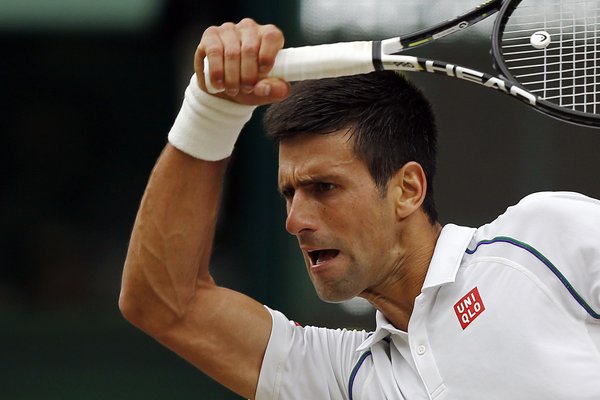
Mindfulness: Nole’s “Secret” Weapon
I thought it was fitting to talk about Novak Djokovic as the world number one gears up for third round action in Roland Garros determined to win the only Grand Slam that has eluded him so far in his surefire hall of fame career. Say what you want about Djokovic not (yet) being able to hoist The Musketeer’s Trophy, and about how he’ll need to win it to be mentioned in the same breath as the other one-name winners of all grand slams such as Andre, Roger and Rafa. What is clear is that he is the most dominant player today.
And in Neil Endecott’s article, Djokovic’s New Tennis Psychology, which appeared in The Hufftington Post, we get to see one of the big reasons why Djokovic is world’s number one player today: mindfulness meditation.
Mindfulness meditation, as a practice, has been around for a long time now and is rooted in the principles and meditation exercises of Buddhism. It also is very similar to the Jesuit tradition of self-awareness meditation which is a big part of St. Ignatius’ Spiritual Exercises. As an approach to sport performance, it is relatively new.
According to Endecott’s article, mindfulness is “a way of paying attention to your experience as it happens without judgment” and that the exercise of mindfulness meditation “involves focussing your attention on the breath, or on physical sensations, and bringing your attention back to that focus every time your mind wanders from it.” In a big sense, mindfulness meditation is all about focusing on the present and being aware of one’s self right now.
George Mumford, author of the book, “The Mindful Athlete: Secrets to Pure Performance,” and sport psychologist and mindful meditation teacher of the Michael Jordan-Chicago Bulls of the 90’s, has this to say about mindfulness meditation:
(from the online article, Michael Jordan, Kobe Bryant’s Meditation Coach on How to Be ‘Flow Ready’ and Get in the Zone):
“Meditation is not trying to go anywhere or do anything, meditation and being present is just seeing what’s there and letting it speak to you,” Mumford continued. “The goal is to be present to what is. … Can you create space where you can observe it without being identified with it.”
Djokovic, for his part, does mindful meditation for fifteen minutes everyday and it has helped him “let go of negative emotions such as self-doubt, anger and worry,” according to Endecott’s article. No wonder he seems to be one of the few players who can easily forget the last bad shot and move on with the match as if the next point was just the first, when you watch him play. By refocusing on the present – his breathing, his stance, his grip on the racket – he is able to clear his mind of unwanted thoughts that could either distract him, or trigger a snowball effect of negativity in his head. No wonder also that he’s adopted this practice to give him a mental edge (a “champion’s edge,” if I may shamelessly say so) over the very tough field he’s currently up against in the French Open.
In my work with professional golfers, I incorporate a lot of the principles of mindfulness in the different activities and tasks that we do. I see this movement gaining more momentum over the next few years, and with the likes of Djokovic and other top athletes actively practicing and speaking of its benefits, I hope mindfulness meditation becomes a staple in every athlete’s (and team’s) preparations.
- air jordan
- champion's edge
- coach lee tajonera
- george mumford
- getting in the zone
- hufftington post
- kobe bryant
- mental coach philippines
- mental coaching
- mental preparation
- mental toughness
- mental training
- michael jordan
- mindfulness
- mindfulness meditation
- mj
- neil endecott
- nole
- novak djokovic
- shaquille o'neal
- sport psychology
- sport psychology philippines
- sport science
